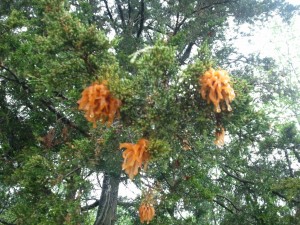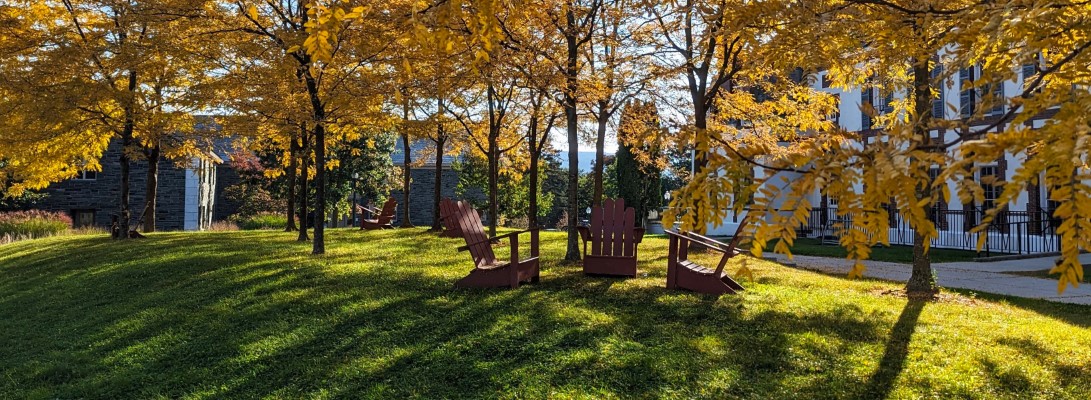Once you see one, you start seeing them everywhere.

The first warm rain in the spring makes these spores appear on Red Cedar (Juniper) trees, completing part of its life cycle. Red Cedar is a first-growth conifer pretty common in Vermont in abandoned pastures, along roads, and elsewhere, so finding these disgusting things aren’t hard. Sometimes they are as big as your fist, sometimes just a golf ball, but they are always bright orange, and disgustingly slimy and gelatinous. I remember being thrown one by my landscaper employer in Connecticut, and being grossed out for the entire rest of the day, catching it absentmindedly.
This is brought to you by a fungus called Cedar Apple Rust, latin name (brace yourself) Gymnosporangium juniperi-virginianae. The fungus is a ‘dual-host’ fungus, needing two different type plants to complete its life cycle. Part is on the Red Cedar, where small galls sit and lie in wait for the warm rain in the spring to activate. They can be mistaken for cones for those not totally up on their conifer botany. Once activated, spores then alight on the wind, and carry to apple trees (or crabapples), where they infect the twigs and leaves. On this host, it appears like small orange or yellow spots. These spots then produce spores in July or August, and re-infect the juniper.
Because of the ubiquity of Eastern Red Cedar control is very, very difficult. Like many things, the best techinique is prevention, which entails removing all cedar from within a mile (!) of the orchard. Fungicide sprays are effective, but need to be done now, which is another whole host of problems, seeing as the apples and crabapples are starting to bloom, a delicate time to say the least. Apples and crabapples vary in their susceptibility to the disease. I fell in love with a crabapple once, a double flowered variety named ‘Brandywine’, with dark pink flowers like tiny roses (I won’t post a picture and tease you too), only to watch it totally defoliate by the end of July-not a leaf left the rest of the year-all from a severe infection. Resistant varieties can be found, though, and are probably a good idea.
